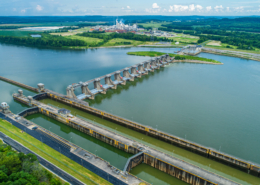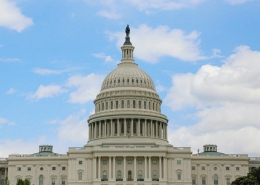Today, the drive from Quincy, Massachusetts to Philadelphia takes about five hours, if you don’t hit any traffic. The trip is neither arduous nor complicated. Quincy is only a few miles from I-95 and the interstate goes all the way to Philadelphia about 309 miles away.
You will probably make a quick stop at a rest area, located in a town whose name you are not even aware of. The cost of tolls will be more than $45, but you are unlikely to notice that, as you speed through the E-ZPass lanes.
In his book, John Adams, the author David McCullough described the route that Adams took from his Quincy home to the Continental Congress in Philadelphia. The city would later serve as the nation’s capital between 1790 and 1800.
Adams traveled west on his horse across Massachusetts until he came to Springfield where horses and their riders were ferried across the Connecticut River. Then he rode south along the river to Wethersfield, took another road to New Haven, and then continued on to New York. A ferry took him across the Hudson River to New Jersey where he had to take three more ferries (over the Hackensack, Passaic, and Raritan Rivers) before arriving in Princeton. Adams continued onto Trenton for the final ferry crossing over the Delaware River to Pennsylvania.
This trip typically took about two weeks, depending upon the weather, ferry service, and the number of times travelers stopped to eat and take care of their horses.
While many roads could be impassable after a heavy rain, “post roads” tended to be relatively well constructed and maintained. They were used for transporting mail and connected major cities including New York, Boston and Albany.
Post roads pre-dated the Revolutionary War. Some of them traced their origins back to the 17th century when King Charles II directed America’s colonial governors to create a road that would connect Boston with Charleston in South Carolina.
 The U.S. Constitution, ratified in 1789, explicitly authorized Congress the power to establish post offices and post roads. After President Washington signed the Post Office Act of 1792, the U.S. funded thousands of miles of post roads.
The U.S. Constitution, ratified in 1789, explicitly authorized Congress the power to establish post offices and post roads. After President Washington signed the Post Office Act of 1792, the U.S. funded thousands of miles of post roads.
You can still walk and drive along old post roads and see some old mileposts, such as this one in Harvard Square.
While post roads connected cities, the ports of the new nation were their economic lifeblood.
 This section of the Albany Post Road, north of New York City, has been in continuous use since 1669. The Old Road Society of Philipstown has campaigned to “save, don’t pave” this six-mile stretch.
This section of the Albany Post Road, north of New York City, has been in continuous use since 1669. The Old Road Society of Philipstown has campaigned to “save, don’t pave” this six-mile stretch.
During Adams’ presidency, the U.S. exported a wide range of agricultural products from beef and bacon to dried apples and flour. Farmers sent their crops and products to the West Indies, London, and Lisbon, and as far away as China and North Africa. At the same time, the U.S. imported food and drinks such as rum, beer, coffee, tea, cheese, sugar, and molasses. Ships also brought in manufactured goods from abroad including nails, twine, boots, and furniture.
Adams, like his predecessor George Washington, built new lighthouses to ensure the safe flow of goods in and out of American ports. President Adams was also concerned with protecting ships hundreds of miles away.
After the U.S. was formed, Congress ratified a treaty with England that aligned the new country against France, its former ally and England’s enemy. Between October 1796 and July 1797, French privateers (private warships commissioned by the French government) attacked ships sailing to British ports and carrying British-owned freight. In the Caribbean, the French seized more than 300 American merchant ships and took their cargo.
This impacted the incomes of U.S. farmers, merchants, shippers, and shipowners. With nearly six percent of the nation’s merchant ships seized, insurance rates for shippers skyrocketed, and imports and exports slowed. Fewer imports impacted the country’s ability to finance the new government’s expenditures and pay off its debt, since tariffs were the primary source of the federal government’s revenues.
In 1798, President Adams sent U.S. naval ships to the Caribbean to stop the privateers. This was America’s first international conflict. The “Quasi-War” would certainly not be the last time that the U.S. military has been used to protect overseas transportation routes.
Photo Credit for Post Road: Daniel Case
Check out all of the articles in our Presidential Series by visiting our archive!















